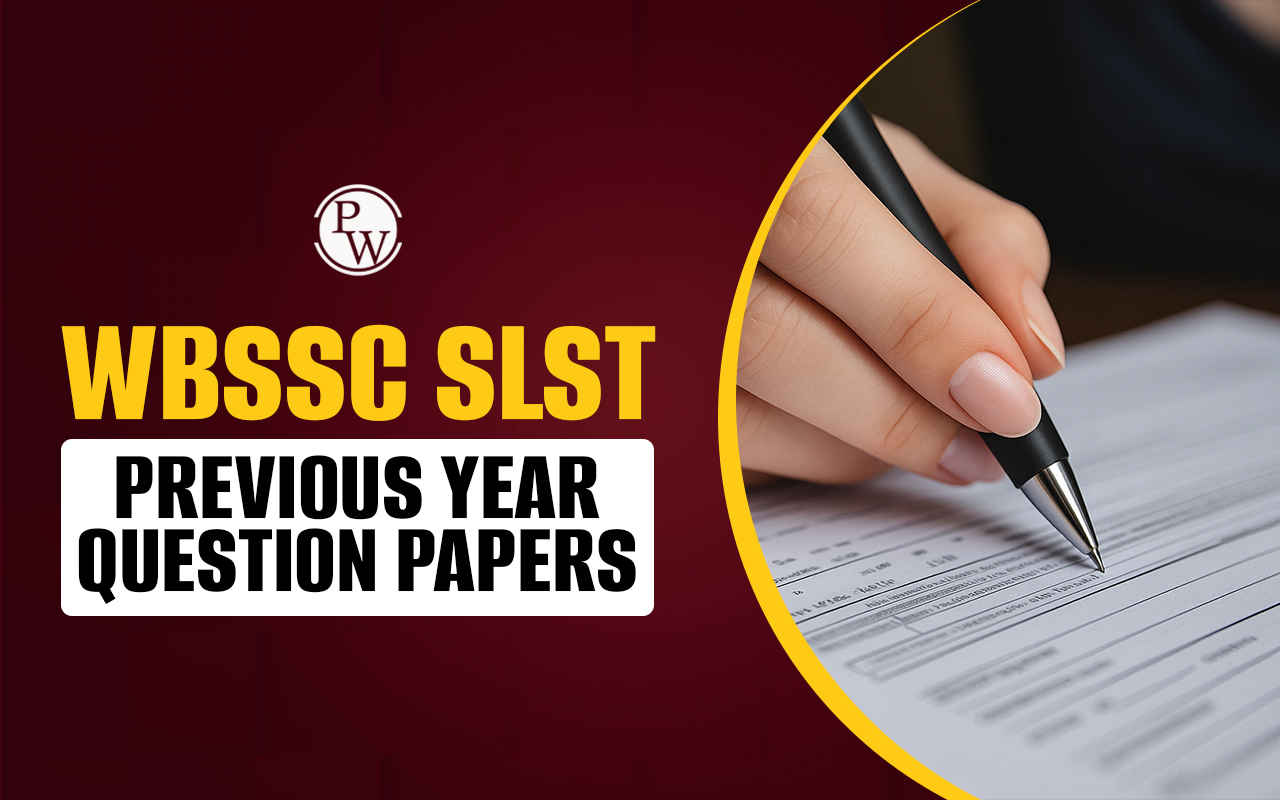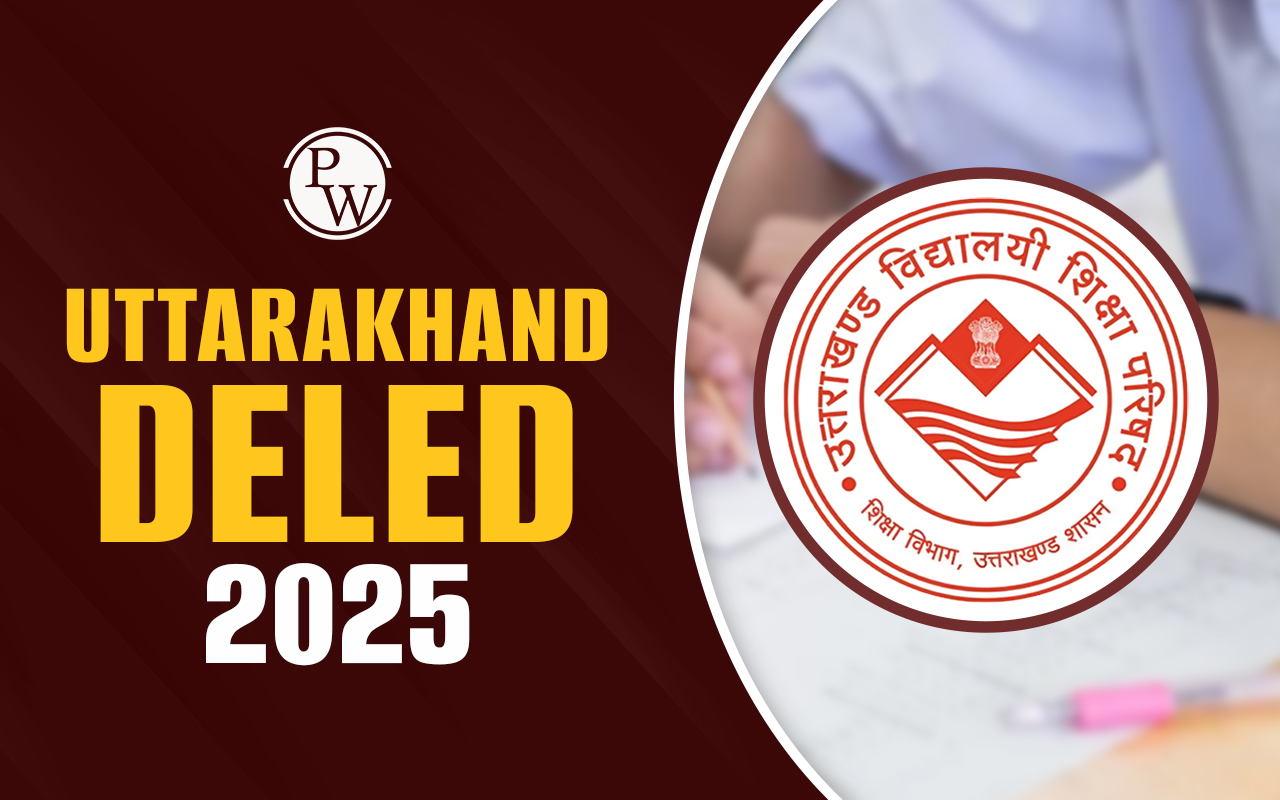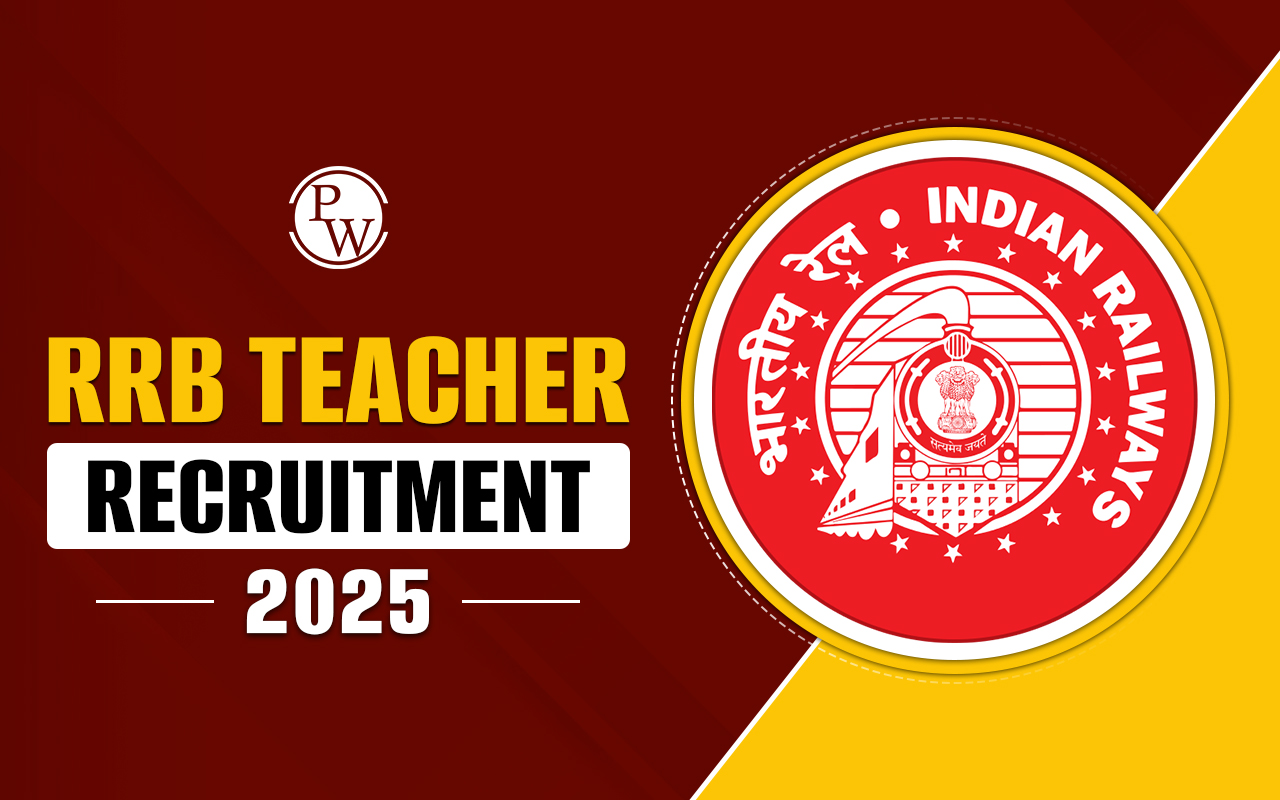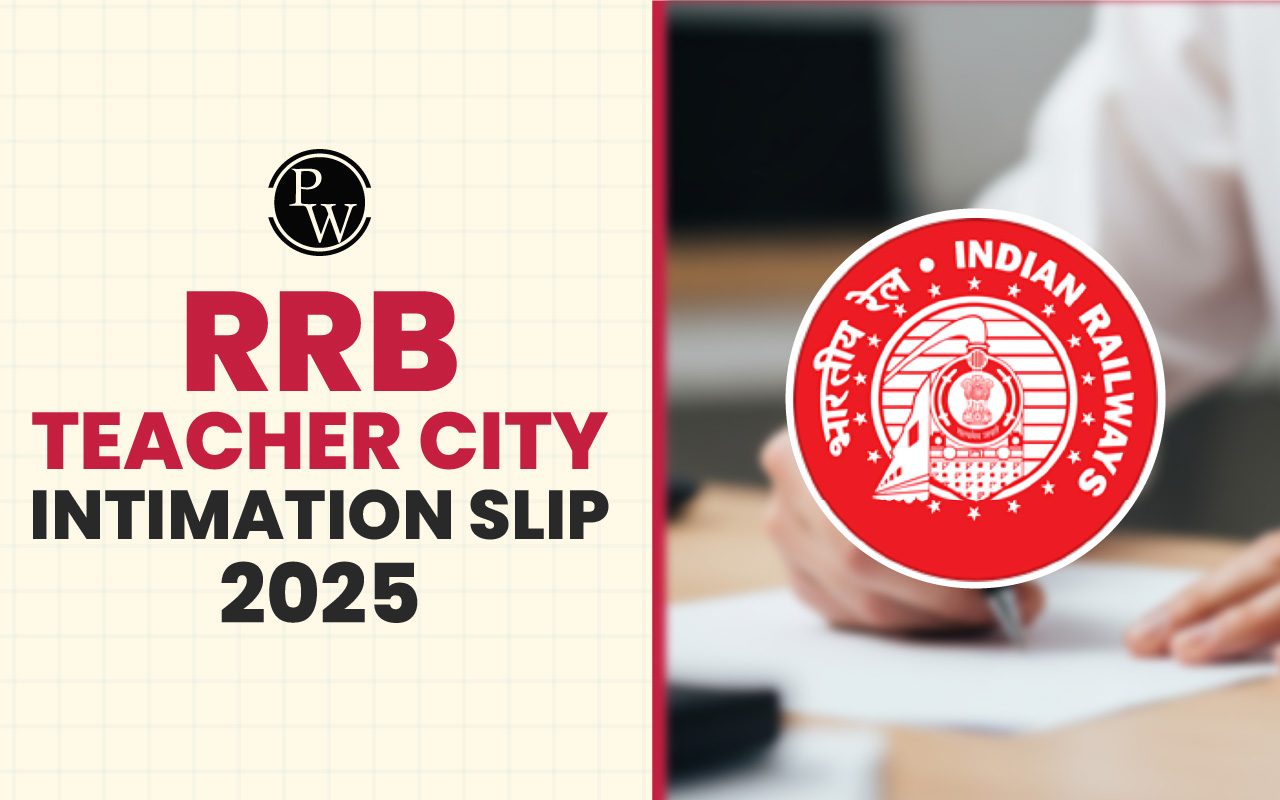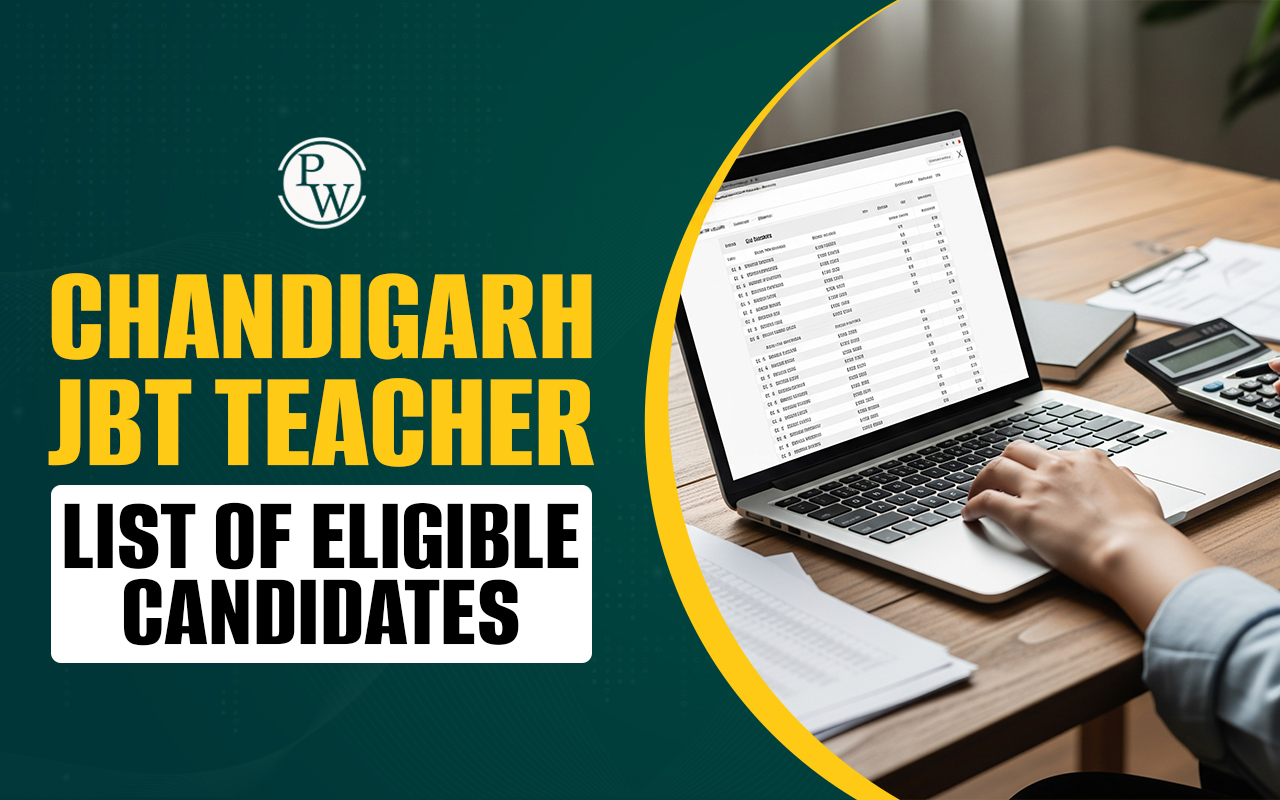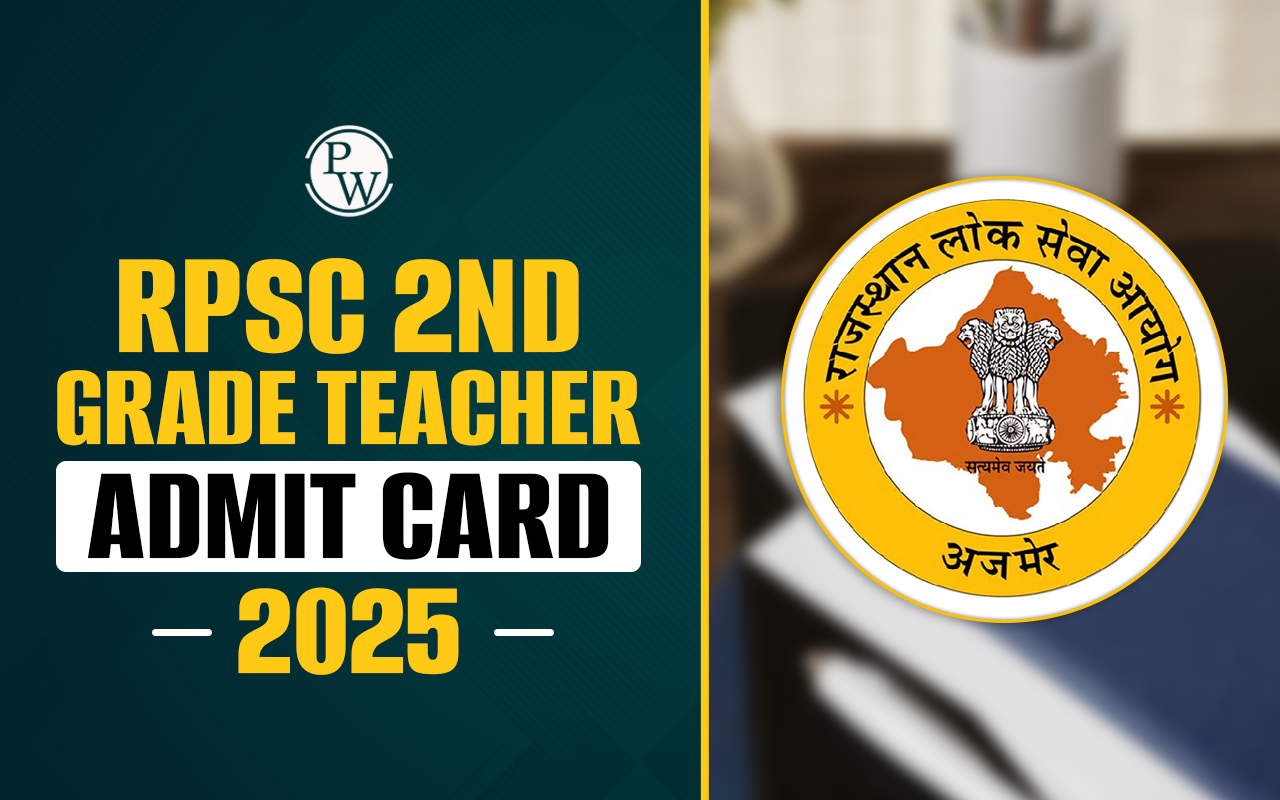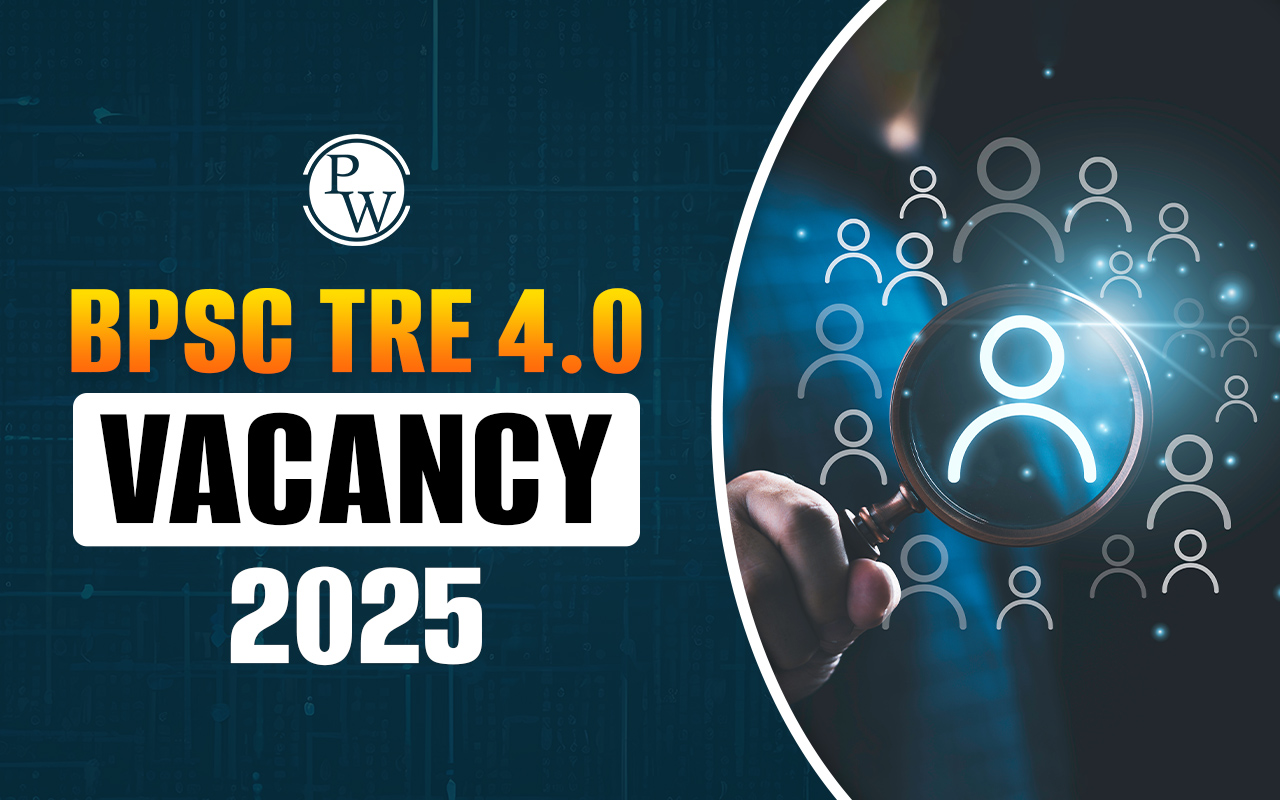
JSSC Assistant Teacher Syllabus 2024: Jharkhand Staff Selection Commission has announced the JSSC Assistant Teacher Syllabus 2024 for the Primary and Graduate Teachers. The candidates can download the Jharkhand Assistant Teacher Syllabus PDF from the official website, jssc.nic.in. The JSSC Assistant Teacher Syllabus helps to understand the topics that are relevant for the examination and prepare them accordingly.
JSSC Assistant Teacher Syllabus 2024
The JSSC Assistant Teacher Syllabus should be followed to prepare for the examination. The commission has released a separate JSSC Assistant Teacher Syllabus for both PRT and TGT. Candidates can go through the JSSC Assistant Teacher Exam Pattern to understand the subject name, marking scheme, and duration of the exam. Additionally, one should resort to the Jharkhand Assistant Teacher books to get a detailed idea of the basics for the exam.Also Check, BPSC Teacher Result 2023
JSSC Assistant Teacher 2024 Overview
Candidates who are aspiring for the JSSC Assistant Teacher Recruitment 2024 examination can go through the table below to get a quick overview.| JSSC Assistant Teacher 2024 Overview | |
| Conducting Authority | Jharkhand Staff Selection Commission |
| Exam Name | JSSC Assistant Teacher, Jharkhand Teacher, JSSC Assistant Teacher, Jharkhand JSSC Assistant Teacher |
| Exam Date | January 12 to 31, 2024 |
| Exam Category | Recruitment Exam |
| Examination Mode | Offline |
| Application Mode | Online |
| Frequency | Annual |
| Official Site | jssc.nic.in |
JSSC Assistant Teacher Syllabus 2024 PDF
JSSC Assistant Teacher Syllabus PDF has been announced for all the subjects. The candidates can download the Jharkhand Assistant Teacher Syllabus for the subjects for effective preparations. The commission has announced a separate JSSC Assistant Teacher Syllabus PDF for both Intermediate and Graduate Teachers. Get the subject-wise JSSC Assistant Teacher Syllabus 2024 in the table below.| Subject | JSSC Assistant Teacher Syllabus PDF |
| JSSC Assistant Teacher Language Syllabus | Download Link |
| JSSC Assistant Teacher Subject Wise Syllabus | Download Link |
JSSC Assistant Teacher Syllabus 2024
JSSC Assistant Teacher Syllabus 2024 has been released for both Intermediate and Graduate Teachers. The candidates can check the Jharkhand Assistant Teacher syllabus to prepare the topics that are relevant for the examination. Candidates can strategise for the JSSC Assistant Teacher 2024 Syllabus to maximise the examination.JSSC Assistant Teacher Syllabus for Intermediate Teacher
| Subject | JSSC Assistant Teacher Syllabus 2024 |
| Matri Language as per Secondary Examination | Hindi English Santali Mundari HO Khadiya Kurukh Kurmali Khortha Nagpuri Panchpaganiya any one Language |
| Language Notified by the Department of Personal, Administrative Reforms and official Language | Hindi English Urdu Santhali Bangla Mundari (Munda) HO Khadiay (Kurukh) Oranon Kurmali Khortha Nagpuri Panchpadganiya Udiya Sanskrit |
| Social Science |
|
| Science & Maths |
|
| Science |
|
JSSC Assistant Teacher Syllabus for Graduate Teacher
| Subject | JSSC Assistant Teacher Syllabus 2024 |
| Matri Language as per Secondary Examination | Hindi English Santali Mundari HO Khadiya Kurukh Kurmali Khortha Nagpuri Panchpaganiya any one Language |
| Language Notified by the Department of Personal, Administrative Reforms and official Language | Hindi English Urdu Santhali Bangla Mundari (Munda) HO Khadiay (Kurukh) Oranon Kurmali Khortha Nagpuri Panchpadganiya Udiya Sanskrit |
| Physics | (a) GENERAL PHYSICS: Vectors and properties of vectors, Relative velocity, Projectile, Uniform circular motion, work energy and power, Gravitation, and escape velocity, Kepler’s laws of planetary motion, elementary idea of Surface tension, Angle of contract, viscosity elementary ideas. (b) RELATIVITY: Special theory of relativity and Lorentz transformation, Length contraction and time dilation, Velocity dependence of mass, Mass energy equivalence. 2. Heat and thermodynamics: Kinetic theory of gases, Zeorth Law of Thermodynamics, First law of thermodynamics, Isothermic and Adiabatic processes, Reversible and irreversible processes, Second low of thermodynamic, Carnot engine and its efficiency. 3. Optic:Simple and compound microscopes, Huygne’s Principle, Interference of light, (elementary Ideas). 4. Electrostatics and Magnetism: Gauss’s theorem and its applications, electric potential and field at a point due to an electric dipole, Capacitors and combination of capacitors (Series and parallel), Magnetic hysteresis, Classification of magnetic materials. 5. Current Electricity: Kirchhoff’s law and its application to a Wheatstone bride, Heating effect of current, Bio-Savart’s Law, Faraday’s law of electro-magnetic induction, Lenz’s law. 6. Atomic and Nuclear Physics: Structure of an atom, Bohr’s theory of hydrogen atom, Heisenberg’s uncertainty principle, Schrodinger’s equation. 7. Electronics: Intrinsic and extrinsic semiconductors, p-n junction diode, zener diode, half wave and full wave rectifiers, Transistors (P-N-P and N-P-N) and its characteristics in common- base and common emitter configurations, Decimal ann binary systems and their inter –conversion, Basic logic and truth table, Boolean algebra. |
| Mathematics | Algebra Set theory – Generalized De Morgan’s Law, countable and uncountable sets, Set mappings. Theory of Equations: Relation between roots and coefficients, Transformation of equation. Symmetric function of roots. 2. Differential Calculus Functions, continuity and Differentiability, Successive Differentiation, Leibnitz Theorem, Partial Differentiation, Euler’s Theorem Tangeut and Normal. 3. Integral Calculus Indefinite Integration of Trigonometric, Rational and irrational functions. Properties of Definite Integral, Reduction formula, differential Education on first order, and 1st degree. 4. Co-ordinate Geometry Standard Equation of Parabola, Ellipse. Hyperbola Tangents and normal. (Diameter Excluded) 5. Co-ordinate Geometry Three Dimension Different coordinate systems and relation between them Direction cosines. Plane Straight Line 6. Trigonometry DE Mocvre’s Theorem and its application. Complex Argument, Gregory Series. Summation of Series. |
| BOTANY | Binomial Nomenclature of Plants with examples. Cell structure of plants and function of cell organelles. Structure and function of DNA. Plant tissues, its structure and function. Mitosis. Parasitic and saprophytic mode of nutrition in plants. Transpiration. Photosynthesis and factors effecting photosynthesis. Role of phytohormones in plants. Reproduction in plants typical ecosystem, physics and biotic factors, food chain and energy flow. Environmental pollution: Air, water and sound pollution and their control. |
| Zoology | Classification of animals up to class level with characters and examples. Structure and function of Bio-molecules like Nucleic acid, protein, lipid, carbohydrates. Mechanism of animal cell Division, Replication, Transcription and translation in prokaryotes and eukaryotes. Mendel’s Law of heredity, Sex determination in Drosophila and man. Linkage and crossing over, Human Genetic Diseases, Mutation and their role in evolution. of Digestion, Circulation, and Excretion in mammals. Mechanism of Nerve impulse conduction and Reflex action. Endocrine glands and their Hormones with special reference to reproduction Theories of Evolution Darwinism, Lamarckism and modern synthetic theory. Human diseases, causative agents, symptom, prevention and their control. (caused by bacteria and viruses) Deficiency diseases of Vitamins and Minerals. Aquaculture, Apiculture, Sericulture and poultry farming and its economic importance. |
| Inorganic Chemistry | Atomic structure – Fundamental particles of matter, atomic model- Rutherford’s Hand’s rule, Pauli’s exclusion principle. Periodic table, periodicity of properties, electro negativity, electro affinity and ionization potential. Chemical bonding: Co-valent bond, lonic bond, Hydrogen bonding, Vander Waal’s forces. Co-ordination chemistry: Double and complex salt, Werner’s theory, Effective atomic number, valence bond theory in complexes. General chemistry of Gr IB.IIA and IIB elements of periodic table, Extraction & Properties of Silver, Boron, Phosphorous & and Chromium. Properties, structure and uses of their compounds. Preparation, properties, structure and uses of following compounds – Hydrogen peroxide, Ozone, Hydrazine, Hydroxylamine acid, and potassium permanganate. Different theories of acids and bases, Hard and soft acids. Reactions in Liquid NH3. (b) Principle involved in the separation of Captions, Solubility product, common ion effect. Preparation, Properties, bonding and application of alkyls and aryls of Li and Sn |
| Organic Chemistry | Hybridization in organic compounds, nomenclature of organic compounds. 2. Alcohols: Classification, Preparation, properties and distinction between different types of monohydric alcohols, phenols – preparation and properties, comparative acidic strengths of alcohols and phenols. 3. Carbohydrates: Classification and nomenclature, Glucose, Fructose, chain lengthening and chain shortening of aldoses, Conversion of glucose into fructose and vice-versa. Determination of open chain and ring structure of glucose. 4. (a) Preparation and synthetic use of maloinc ester&Grignard Reagent. (b) Preparation, properties and use of urea and pyridine. 5. Explain Tetra valence of carbon, type of hybridization in organic radical Carbonium lon & Carbanion, and their formation and stability. Effects in organic compounds: Inductive, Mesmeric, Hyper conjugation and resonance. 6. General Methods, Preparation, Properties of Mono carboxylic acid and their derivatives. 7. Types of isomerism – optical, geometrical and conformational, tautomerism. 8. (a) Synthetic polymers- Addition polymerization free radical vinyl polymerization, condensation polymerization, polyesters and polyamides. (b) Soaps and synthetic detergents, colour & constitution of dyes and their synthesis, Oils and fats. |
| PHYSICAL CHEMISTRY | Thermodynamics: System and surrounding, types of systems, heat work, Internal energy, Heat capacities and relation between them, Calculation of Q,W,E and H in isothermal and adiabatic expansions of gases, Efficiency and thermodynamic scale of temperature, Hess’s law and kircloff’s law. 2. Characteristics of catalyst, preparation, purification, stability and properties of colloids. Crystal Lattice, Unit Cell, Bravis Lattice, Bragg’s equation. (A) Gaseous states – Kinetic Theory of gases, Ideal and Real gases, Van der wall’s equation, Critical Constants. Rates of reaction, Mathematical Characteristics of simple Chemical reaction – I Order, II Order and pseudo Order, Determination of Order of Reaction, Arrhericus equation and its application. Electro Chemistry – Specific Equivalent and Molecular Conductivity. Determination of Specific and Equivalent Conductivities, Effects of dilution on SP, equiv and molecular conductivity, Kohlrausch Law’s, Emf of a cell and its determination. Dipole Moment and its determination, refractive Index and Molecular refractivity, magnetic properties – Para magnetism & Ferro-Magnetism. |
| Civics | Comparison between Traditional and modern Political Science. Behaviouralism:Meaning and characteristics. Liberty:Political liberty, Economics liberty (b) Equality:Social Equality, Economic Equality and relations between Liberty and Equality. Democracy: Meaning and conditions for its success. Political Party: meaning and functions. Public Opinion: Meaning and conditions for the formation of public Opinions. Citizenship: Methods of acquiring citizenship. Welfare State: Meaning and functions Gandhism: Satyagraha Marxism: Theory of class struggle. |
| Geography | 1. Nebular hypothesis of the origin of the earth 2. Structure of earth 3. Difference between Rock and Minerals 4. Mountains 5. Earthquake 6. Air’s View on Isostasy 7. Weathering 8. Karst topography 9. Structure of Atmosphere 10.Plantation Agriculture 11.Iron and Steel Industry of India |
| Economics | Concepts of Micro and Macro economics. 2. Demand and elasticity of demand. 3. Cardinal and ordinal approach to consumer equilibrium, consumer surplus. 4. Law of returns. Price determination under perfect competition and monopoly. Theories of the determination of rent,Wages, interest and profit. Concept and functions of money, quantity theory of money, inflation and deflation. Function of Central Bank and Commercial banks. 8. Principal of maximum social advantage, causes of the growth of public expenditure, ability to pay theory of taxation, taxable capacity, Public debt and its redemption, Budget. 9. Comparative cost of taxation, Gains from International trade |
| Business Studies | Meaning, Nature, Scope and significance of Business economics Law of demand & supply Elasticity of Demand and its measurement Management and Administration Levels of Management Roles of a manager, Significance of management Limitations of management Business environment and its interaction with management, Management Theory Meaning of Research, Significance, objective motivation in Research Types of Research Concept of Hypothesis formulation Meaning of Research Design Classification of Information, value of information, information & MIS Concepts, role importance of Management Information Systems MIS & decision make concepts Indian Partnership Act-1932 Definition and nature of Partnership, Registration of Firm incoming and Outgoing partners Dissolution of Firms, Negotiable Instruments Act-1932 Deigning & Developing HR System: factors influencing Hr forecast, forecasting labor-demand and supply , Job analysis, Job evacuation, Recruitment and selection: Meaning, definition, source and process of recruitment selection Meaning, concepts selection process, methods of selection, tests & interview Human Resource Development -Bonds Stocks and Convertible securities Market trading arrangements Organized securities markets over the counter Efficient Markets regulations of securities markets Risk & Return Risk Classification |
| Sociology | Origin and development of Sociology as an independent discipline, Sociology meaning, definition, nature and its Scope , Relationship of Sociology with other social sciences Introduction to environmental studies, Ecosystem, Natural Resources- Renewable and Non- renewable Resources, Biodiversity and Conservation, Environmental Pollution Social change meaning, theory of evolution, and cyclical theory, Culture meaning and culture and personality, cultural lag, Social stratification, meaning, forms and theories (Marxin, Functional), Definition, Nature & Scope, Characteristics of Rural Society in India, Rural Urban differences and rural urban continuum in India, Agrarian Movements in India, Poverty Definition, Scope and Importance of Urban Sociology, Town, City, Industrial City, Rural Urban Contrast & continuum Urbanization in India factors & Consequences, Urban Environmental problems |
JSSC Assistant Teacher Exam Pattern 2024
JSSC Assistant Teacher Exam Pattern 2024 for both Intermediate and Graduate Teachers has been announced by the commission. Candidates can go through the detailed Jharkhand Primary Teacher Exam Pattern to understand the subjects asked, the marking scheme and the exam duration.- The Jharkhand PRT Teacher exam will be held in the online mode
- All the questions asked in the JSSC Assistant Teacher 2024 exam will be multiple choice based
- There will be no negative marking for the wrong answers
- The level of the questions asked in the exam will be of class 10+2 or Graduation level
JSSC Assistant Teacher Exam Pattern for Intermediate Teacher Post
| JSSC Assistant Teacher Exam Pattern | ||||
| Paper | Subject | Question | Marks | Duration |
| Paper 1 | Matri Language as per Secondary Examination (Choose one Language) i.e. Hindi/ English/ Santali/ Mundari/ HO/ Khadiya/ Kurukh/ Kurmali/ Khortha/ Nagpuri/ Panchpaganiya any one Language | 100 | 100 | 2 hours |
| Paper 2 | Language Notified by the Department of Personal, Administrative Reforms and official Language, Jharkhand Ranchi, Hindi/ English/ Urdu/ Santhali/ Bangla/ Mundari (Munda)/ HO/ Khadiay (Kurukh)/ Oranon/ Kurmali/ Khortha/ Nagpuri/ Panchpadganiya/ Udiya/ Sanskrit | 100 | 100 | 2 hours |
| Paper 3 | General Knowledge & Current Affairs | 50 | 50 | 3 hours |
| Social Science | 75 | 75 | ||
| Science & Maths | 75 | 75 | ||
| Total | 500 | 500 | 5 hours | |
JSSC Assistant Teacher Exam Pattern for Graduate Teacher Post
| JSSC Assistant Teacher Exam Pattern | ||||
| Paper | Subject | Question | Marks | Duration |
| Paper- 1 (Qualifying Nature) | Matri Language as per Secondary Examination i.e. Hindi/ English/ Santali/ Mundari/ HO/ Khadiya/ Kurukh/ Kurmali/ Khortha/ Nagpuri/ Panchpaganiya any one Language | 100 | 100 | 2 hours |
| Paper-2 | Language Notified by the Department of Personal, Administrative Reforms and official Language, Jharkhand Ranchi, Hindi/ English/ Urdu/ Santhali/ Bangla/ Mundari (Munda)/ HO/ Khadiay (Kurukh)/ Oranon/ Kurmali/ Khortha/ Nagpuri/ Panchpadganiya/ Udiya/ Sanskrit | 100 | 100 | 2 hours |
| Paper -3 | General Knowledge & Current Affairs | 100 | 100 | 2 hours |
| Paper-4 | Optional Subject any one (Subject in which you will apply) | 180 | 180 | 3 hours |
| Total | Total | 480 | 480 | 9 hours |
JSSC Assistant Teacher Marking Scheme 2024
The commission has prescribed the JSSC Assistant Teacher Marking Scheme 2024 for the examination. Candidates have to refer to the marking scheme as mentioned by the Jharkhand Assistant Teacher Exam Pattern to calculate the marks scored in the examination. As per the official marking scheme for the JSSC Assistant Teacher Exam, there is no mention of negative marking for the wrong answers.| JSSC Assistant Teacher Marking Scheme 2024 | |
| Correct Answer | 1 mark |
| Wrong Answer | 0 mark |
Check Here, JSSC Assistant Teacher Admit Card 2024
JSSC Assistant Teacher Books 2024
JSSC Assistant Teacher Books 2024 should be followed by the candidates to prepare for the written examination. These books are curated in line with the official JSSC Assistant Teacher Syllabus. Candidates can refer to these Jharkhand Assistant Teacher books to get lucid explanations for the chapters and topics that are relevant to the examination.| Subject | JSSC Assistant Teacher Books | Author |
| Language | English for TET | DT Editorial Services |
| CTET & TET Previous Years Solved Paper Class I-V | Arihant Experts | |
| English Language & Pedagogy | Arihant Experts | |
| Mathematics | Mathematics for TET | Pearson |
| Wiley’s Mathematics Exam GoalPost for CTET and TETs Exams | DT Editorial Services | |
| Fastrack Maths | Sanskruti Books House | |
| Environmental Studies | TET Environmental Studies | Arihant Experts |
| Environmental Studies for CTET & TETs- Previous Year Papers | Arihant Experts | |
| Objective Environmental Sciences | Dr B.B Singh | |
| Science | Science and Pedagogy | Arihant Publications |
| Science and Pedagogy | Om Prakash and Kanta Pradeep Pandit | |
| NCERT Books for Science | NCERTs | |
| Social Studies | Social Studies | Disha Publications |
| TET Social Studies | Anshul Mangal | |
| Social Studies and Pedagogy | Umrao Singh |
JSSC Assistant Teacher 2024 Preparation Tips
The candidates preparing for the JSSC Assistant Teacher 2024 exam should refer to the preparation tips. One should refer to the subject-wise tips to ace the different subjects relevant to the examination. Know about the major preparation tips for the Jharkhand Assistant Teacher exam below.- Begin your preparation by thoroughly understanding the JSSC Assistant Teacher Exam pattern and syllabus. You can go through the detailed Jharkhand Teacher Syllabus to acquaint yourself with the topics, weightage, and marking scheme. This will help you create a targeted study plan and allocate time for each section separately.
- Develop a well-organised study plan that covers all the subjects and topics included in the JSSC Assistant Teacher syllabus. Break down your study plan accordingly focusing on one subject or topic at a time for a consistent performance in the exam
- Solve JSSC Assistant Teacher's previous year's question papers to get a gist of the exam pattern and the types of questions asked. This will help you identify your strengths and weaknesses allowing you to adjust your study plan accordingly
- Use updated study materials and JSSC Assistant Teacher books recommended for the exam. Make sure your study resources cover the entire syllabus comprehensively. Go through the books to get a detailed and comprehensive explanation of the topics relevant to the exam
- Add JSSC Assistant Teacher mock tests into your preparation strategy to simulate exam conditions. Regularly taking mock tests will help you become familiar with the exam difficulty improve your time management skills gradually
JSSC Assistant Teacher Syllabus 2024 FAQs
What is the JSSC Assistant Teacher Syllabus 2023 PDF?
The JSSC Assistant Teacher 2023 Syllabus PDF comprises of subject-wise topics relevant to the paper 1 and paper 2 examination.
Is there any negative marking in JSSC Assistant Teacher 2023?
No, there is no negative marking for the JSSC Assistant Teacher 2023 exam and no marks will be deducted for wrong answers.
How many subjects are there as per the JSSC Assistant Teacher Syllabus 2023?
A total of five subjects, Matri Language, Language Notified by the Department, General Knowledge & Current Affairs, Social Science and Science & Maths will be asked in the exam as per the JSSC Assistant Teacher Paper 1 Exam Pattern.
Is JSSC Assistant Teacher Syllabus 2023 available online?
Yes, candidates can download the JSSC Assistant Teacher Syllabus 2023 from the link available on this page.
How many marks are there in the JSSC Assistant Teacher 2023 Exam?
The JSSC Assistant Teacher 2023 Paper 1 exam will be conducted for a total of 500 marks for the five subjects.
Talk to a counsellorHave doubts? Our support team will be happy to assist you!

Free Learning Resources
PW Books
Notes (Class 10-12)
PW Study Materials
Notes (Class 6-9)
Ncert Solutions
Govt Exams
Class 6th to 12th Online Courses
Govt Job Exams Courses
UPSC Coaching
Defence Exam Coaching
Gate Exam Coaching
Other Exams
Know about Physics Wallah
Physics Wallah is an Indian edtech platform that provides accessible & comprehensive learning experiences to students from Class 6th to postgraduate level. We also provide extensive NCERT solutions, sample paper, NEET, JEE Mains, BITSAT previous year papers & more such resources to students. Physics Wallah also caters to over 3.5 million registered students and over 78 lakh+ Youtube subscribers with 4.8 rating on its app.
We Stand Out because
We provide students with intensive courses with India’s qualified & experienced faculties & mentors. PW strives to make the learning experience comprehensive and accessible for students of all sections of society. We believe in empowering every single student who couldn't dream of a good career in engineering and medical field earlier.
Our Key Focus Areas
Physics Wallah's main focus is to make the learning experience as economical as possible for all students. With our affordable courses like Lakshya, Udaan and Arjuna and many others, we have been able to provide a platform for lakhs of aspirants. From providing Chemistry, Maths, Physics formula to giving e-books of eminent authors like RD Sharma, RS Aggarwal and Lakhmir Singh, PW focuses on every single student's need for preparation.
What Makes Us Different
Physics Wallah strives to develop a comprehensive pedagogical structure for students, where they get a state-of-the-art learning experience with study material and resources. Apart from catering students preparing for JEE Mains and NEET, PW also provides study material for each state board like Uttar Pradesh, Bihar, and others
Copyright © 2025 Physicswallah Limited All rights reserved.



